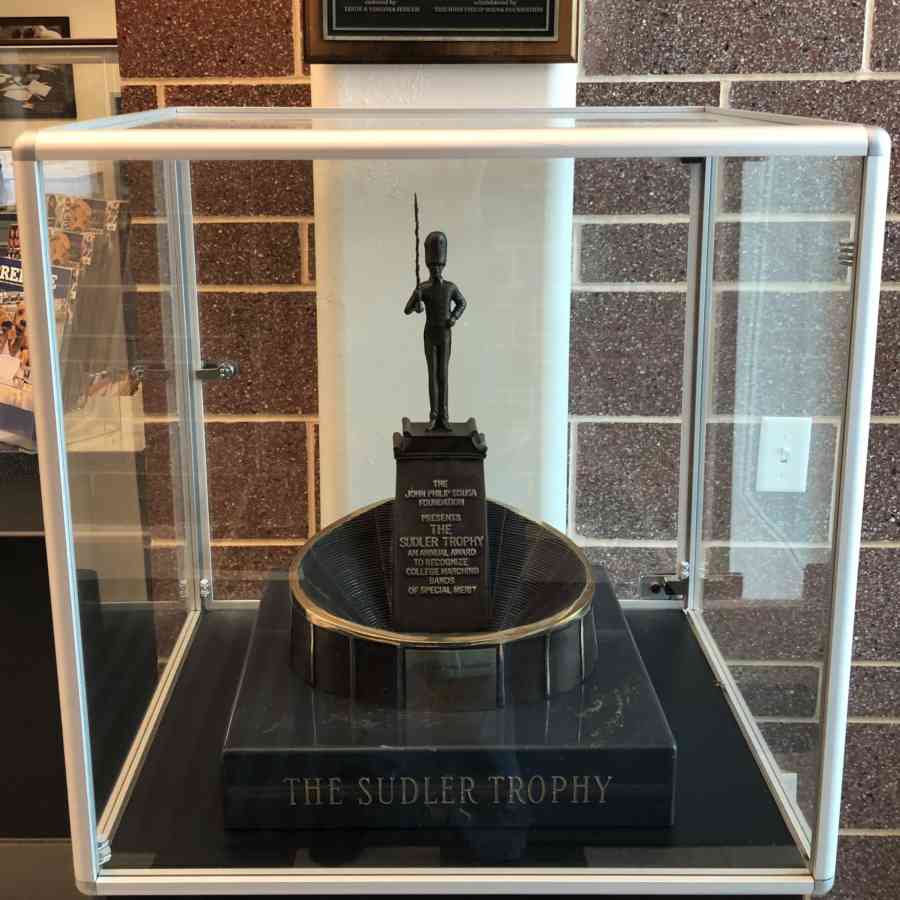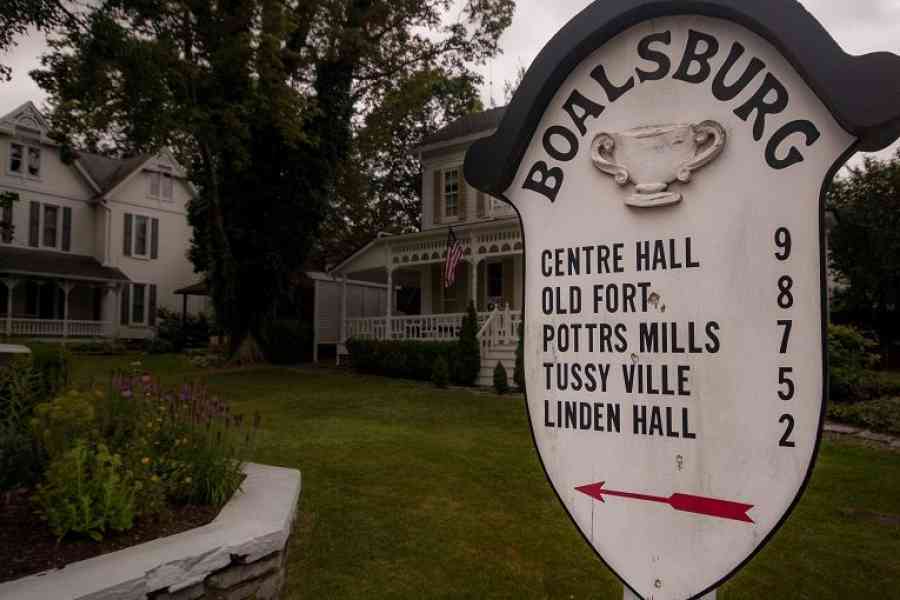The Penn State Blue Band: 125 Years of Raising the Song!
As the instrumentalists take the field, the Drum Major makes his flip, the Blue Sapphire throws her baton, the Silks wave their flags and the Majorettes twirl and dance this Saturday, the Blue Band will be celebrating 125 years!

This article originally published at statecollege.com
For more information about the Penn State Blue Band, the Happy Valley Adventure Bureau at 204 W. Beaver will be hosting a book signing with three Blue Band Alumni on Sunday, September 29, 2024, from 10 am to noon.
The Penn State Blue Band can trace its origin to the formation of the Cadet Band in 1899. George Deike (yes, the guy that has a building named after him on campus) was tasked to find other instrumentalists to create a band. Deike was a bugle player in the Spanish-American War and when the Commandant of Cadets Capt. Thomas Taliaferro noticed Deike’s bugle hanging in the barracks, Taliaferro had Deike play a little and then tasked him to find others for a band. Deike was able to “drum up” five more musicians to make a Cadet Band.
The Cadet Band grew and needed financial support. That’s when Andrew Carnegie (yes, the guy that has a building named after him on campus) donated $800 for the procurement of instruments. With the donation was a note stating, “I have long held that there is no better way for a boy to get the devilment out of his system than to blow it out through a brass horn.”

The Cadet Band would continue to be a student run organization until 1914, when then Penn State President Edwin Sparks (yes, the guy that has a building named after him on campus) hired Wilfred “Tommy” Thompson to be the first permanent director. Sparks was a graduate of Ohio State and was in the Ohio State Marching Band.
Thompson changed the name of the Cadet Band to the College Military Band, but in 1923, the term “Blue Band” was first used.
The standard uniform in 1923 was a khaki military uniform, but Thompson received an order of 50 blue uniforms. He had to decide who would wear them. So, he chose the best players and they were given the brand-new uniforms. This “Blue Band” would be the band that would perform for football games and other special occasions around campus.

The name Blue Band stuck.
Thompson would continue to direct the Blue Band until his retirement in 1938. Hummel “Hum” Fishburn would become the second director of the Blue Band. Under his direction, the band would slowly change from a military style to a more collegiate style of performance.
During World War II, with many college marching bands halting performances until the men came home from battle, Hum decided to fill the ranks of the band with high school students, professors of the college, and women. Women stayed in the Blue Band until after the war. When the men came back, the Blue Band was split into two groups. A marching band that stayed all men and a concert band that was co-ed. Though there is no Concert Blue Band anymore, the Blue Band is still introduced on Saturday mornings as the Penn State Marching Blue Band!
Fishburn would become head of both the Music Department as well as the Music Education Department. Due to his departmental duties, he hired James Dunlop to take over the directorship of the Blue Band in 1947.
During Dunlop’s tenure, the Blue Band would move farther away from its military roots. Under Dunlop’s watchful eye, the tradition of Band Day, the Alumni Blue Band playing at Homecoming, The Floating Lions Drill for pregame, The Drum Major Flip, The Touch of Blue, and The Blue Band Silks all started.

One of the most significant changes was in the Blue Band uniform in 1963. No longer a military band, the Blue Band adopted a more collegiate looking uniform. With just some slight changes, it is very similar to what the band wears today.
Also in 1963, the Alumni Blue Band started. A brainchild of Dunlop and some former Blue Band Alumni, the tradition of close to 400 returning members to play during the homecoming game continues to this day.
Though started in 1965 under Dunlop, credit for the creation of the Floating Lions drill for pregame goes to then assistant director Ned C. Deihl. Deihl has stated that the impetus for the drill was watching the electric signs in Times Square in New York City.
The Drum Major Flip was first performed in 1971 by Jeff Robertson. The original flip was a back flip, but in 1977, Drum Major Ron Louder changed it to a front flip. When asked why he changed it, Louder stated “Because I can’t do a back flip.”

Additional flips were added for the student section by Drum Majors Mike Harrell and Tommy Roberts. The flips were added because a lot of the students are in seats where they can’t see the flip on the 50-yard line.
Majorettes were added to the band in 1972, when co-ed Judy Shearer asked Dunlop to watch her twirl. At the end of the audition, much like how the Cadet Band was formed, Dunlop asked Shearer to find additional twirlers to create a full rank of majorettes.
In 1973, female instrumentalists once again joined the ranks of the Marching Blue Band. There were five female trailblazers in 1973, but now, the Blue Band is about 60% female. Susan Nowlin Batutis was one of those five and in the drum line. In 2023, Nowlin Batutis established a scholarship celebrating 50 years of women in the Marching Blue Band and supporting diversity and inclusivity.
In 1974, the Blue Band Silks were born. There were “Flag Bearers” before 1974, but they were alternate band members that were used to hold the flags for on the field orientation. They did no drills or performances. During one of the bands performances, Colleen Schaeffer Rickenbacher noticed that the flagbearers weren’t doing much on the field and stated out loud that she could do a better job with the flags. Dunlop overheard and simply said, “Fine, then do it!” Schaeffer would shorten the poles and teach the students drills to perform, changing the group from simple flag bearers to the Penn State Blue Band Silks. The Silks will be celebrating their 50th year this year.

Also in 1974, it was decided that the Blue Band would have a feature twirler. Though Judy Shearer was featured in some halftime performances, she did not wear a different uniform from the rest of the majorettes. So in 1974, Lori Donalson would become the first Feature Twirler of the Blue Band. However, the name Blue Sapphire was not used until 1978, when Lori Bowers became the first Blue Sapphire.
In 1975, Ned C. Deihl became director of the Blue Band when just a few weeks before Band Camp, Dunlop passed away. Usually, all members of the Blue Band must audition for their spots for the upcoming season, but due to the short notice, Deihl decided to forego the audition of “Returnees” and let those that had performed previously keep their spots.
Deihl started Bandorama during his tenure as director. Bandorama was an indoor concert of the Blue Band’s music that they played during the season. Usually performed the Friday before the last game of the season in Eisenhower Auditorium, the tradition of Bandorama is now sometimes performed in the Bryce Jordan Center, if a day and time can be obtained.

Deihl would continue to have the Blue Band grow under his leadership. So much so that his original pre-game drill had to be tweaked to include more members. He was also in charge of the Blue Band when Penn State moved from Independent to Big Ten member. The Blue Band would be performing with some of the most famous college bands in the nation. Deihl made sure the Blue Band could hold its own.
In 1996, Deihl retired, and the band programs were broken into two categories, Athletic Bands and Concert Bands. O. Richard Bundy (yes, the guy that has a building named after him on campus) would become Director of Athletic Bands and more specifically, the Director of the Blue Band.
Though only the fifth director of the Blue Band, Bundy holds a very special significance in Blue Band history. He is the only director that was a member of the band. Bundy played trombone in the Blue Band under Dunlop in the late 1960’s and still plays trombone at homecoming in the Alumni Band.

The band continued to grow under Bundy and probably the biggest accomplishment in Blue Band history came under his watch. In 2004, the Blue Band finally obtained its own building. With great support from the Penn State Alumni Association, the Blue Band now had a place to practice when the weather was bad, or a place nearby to store uniforms and instruments. Bundy also oversaw the outfitting of school instruments for all sections of the band.
Bundy was on hand when the Blue Band was honored with the Sudler Trophy in 2005. Awarded by the John Philip Sousa Foundation, the purpose of the trophy is “to identify and recognize collegiate marching bands of particular excellence that have made outstanding contributions to the American way of life.” A marching band can only win the trophy once or the Blue Band would be in the running for the trophy every year.
Bundy would retire in 2014, and in appreciation for all he accomplished with the band, the administration would name the new Blue Band building after him.

- Photo courtesy of Annmarie Mountz
Greg Drane would become Director of the Blue Band for the 2015 season and currently holds the position today. Drane would write drills trying to incorporate other student organizations around the university and take full advantage of the Beaver Stadium sound system. Drane would also keep the Blue Band together during the Covid Years. Much like during World War II, some collegiate bands ceased to exist, but Drane still held auditions. Even though the band did not perform during a game (they weren’t allowed in the stands), he held rehearsals as if they were.
As the Blue Band moves into the next 125 years, it will be interesting to see how Drane has the Blue Band continue to Raise The Song!
This article originally published at statecollege.com
For more information about the Penn State Blue Band, the Happy Valley Adventure Bureau at 204 W. Beaver will be hosting a book signing with three Blue Band Alumni on Sunday, September 29, 2024, from 10 am to noon.


